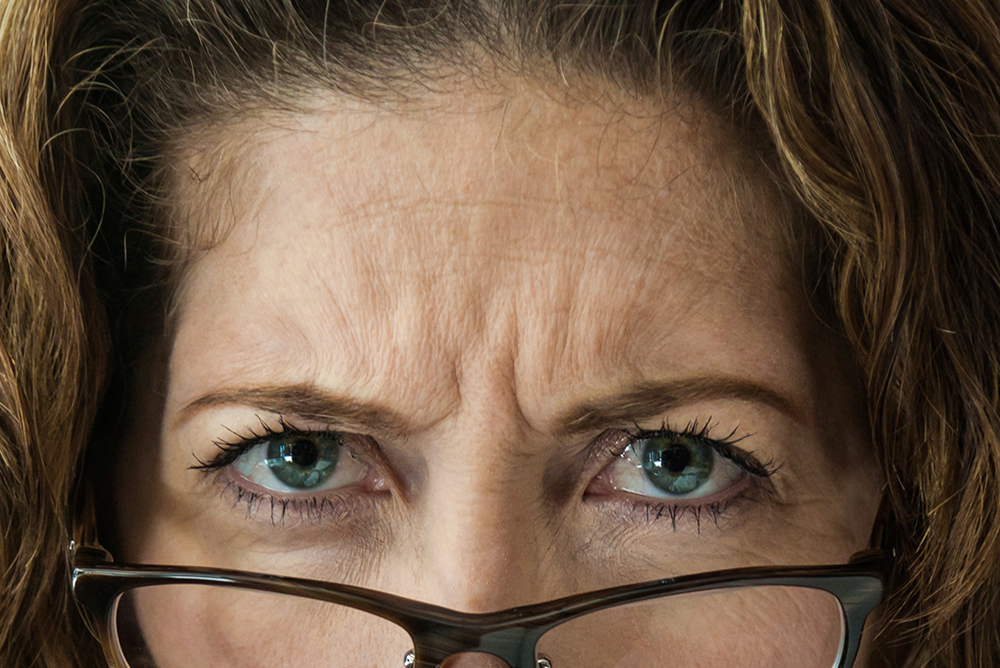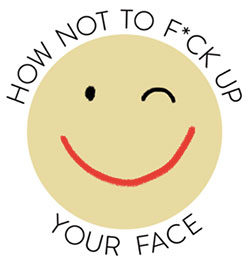
iStock

Can’t get enough Valerie Monroe? There’s more at https://valeriemonroe.substack.com.
By Valerie Monroe
“Ask Val” answers your urgent questions, Vol. 8.
Yes, you, in the back row holding three large bottles of . . . coins?
Q: Go ahead and make fun of me. But I’ve saved up enough for a couple of in-office aesthetic treatments and I’d like to know: Which treatments will give me the most bang for my buck?
A: No making fun! In fact, I just canvassed a few dermatologists and plastic surgeons I know and trust about which treatments they’d recommend if you suddenly found some extra change hiding in your sofa cushions. Well, not some change; more like $800 to $3,000 worth.
The doctors’ answers were generic, so they weren’t taking into account specific issues a patient might have, and I asked only for recommendations that would make an appreciable difference in a woman over 50.
The treatment that came in first: neuromodulators, like Botox or Dysport. Why? Because newer iterations are longer-lasting, which means fewer trips to the doctor’s office and fewer cash layouts. And I love this: Studies have shown that diminishment of angry—or sad-looking frown lines can have a positive effect on mood, even helping to lift depression. So you not only get the benefit of looking more cheerful, you may also get to be more cheerful.
Here’s a short piece I wrote for O, The Oprah Magazine about my first Botox experience.
All I could think about was what could go wrong: a droopy eyelid, a permanent expression of extreme surprise or beetle-browed consternation. That’s why I’d never tried Botox, the botulinum toxin that’s used to reduce facial wrinkling. Also: I was philosophically opposed to shooting anything into my face. “I love my face,” I’d declare to anyone who suggested I might enjoy a light arpeggio of cosmetic fiddling.
Then one morning I looked in the mirror and noticed (I thought) that the little lines between my eyebrows had deepened. I could see where my face was going, but I liked it where it was. So I made an appointment with New York City dermatologist Cheryl Karcher, MD, to ask her whether she thought I might benefit from just the teeniest grace note of Botox. At her office a few days later, I sat under a very bright light and pointed to my concerns. “Ha! Easy to fix,” she said. Then she took a step back and looked at me studiously. “Big frown,” she said. I made a doleful face. “Okay,” she said. “Relax.” And before I knew it, she had administered five quick shots of Botox above and between my eyebrows. “Fini!” said the doctor. A physician’s assistant held an ice pack to my forehead to prevent bruising. “Bravo!” I said.
It took about a week for me to get used to not being able to wiggle my eyebrows the way I used to. (“Wiggle my eyebrows” doesn’t adequately describe what I could do; if there is such a thing as double-jointed eyebrows, I had them. But I don’t have them anymore, at least till the toxin wears off in a few months.) I don’t like the paralyzed feeling at all; it’s as if I’m wearing a cap that fits too tightly around my forehead. But recently a friend said to me, “What’s going on with you? You look . . . bright-eyed and rested!”
So despite the unpleasantness, I’m afraid I’m hooked: An encore is definitely on the program.
I now get a neuromodulator treatment around twice a year. As I mentioned here, it gives my brows a little lift.
After neuromodulators, the doctors recommended certain laser and ultrasound treatments, which can even out skin tone, diminish hyperpigmentation, and minimally tighten. In a previous post, I mentioned a couple of studies (this one and this one) that demonstrated that the facial skin age of women is influenced not only by the appearance of lines and wrinkles, but also by unevenness, discoloration, and a decrease in light reflection (how light bounces off the skin). Researchers found both men and women are remarkably sensitive to even small changes in skin color distribution; when discoloration is removed, faces are judged to be more attractive. To most effectively address discoloration issues, Karcher recommends Fraxel, which can make a marked difference in skin texture, tone, and superficial lines and wrinkles. (Resurfacing lasers like Erbium YAG can also work, but Karcher prefers the effect of Fraxel.) Intense pulsed light (IPL) is good for a less dramatic effect; more like rinsing your face than having a power wash.
I’m not a big fan of filler. Please know I’m writing only anecdotally, and I’ve seen some nice results in other women, but I’ve had filler two or three times and have noticed no lasting difference. I know it can be used artfully. But it requires more upkeep than neuromodulators, lasers, and ultrasound, and I’ve seen too many overfilled faces to feel comfortable recommending it.
Of course, I now feel obliged to remind you how important it is to learn to see your face with loving awareness. I was having lunch outdoors last week with an old friend when a former beauty editor I haven’t seen in years stopped at our table to say hello. She’s a beautiful woman by anyone’s standards and she looked terrific: no detectable makeup, luminous skin, etc. When she left, my lunching friend said, “How old is she?” I had no idea. She could’ve been 40, 45, 55. And I remembered what a dermatologist once told me about “maintenance.” That the younger you start consistently with minor treatments—like neuromodulators, modest amounts of filler, and laser and ultrasound devices—the less obvious your aging will be. I chose to do very little, even though as a beauty editor most of the treatments would’ve been free. Call me crazy, but I wasn’t interested in that kind of lifetime commitment. Now at 70, I wonder . . . should I have been?
The only way out of that ambivalence is through it: I did the mirror meditation. I felt the disappointment, the regret, the competitiveness, the loss, and, finally, the love. I didn’t get an answer to my question. But I didn’t need one.
For nearly 16 years Valerie Monroe was the beauty director at O, The Oprah Magazine, where she wrote the popular “Ask Val” column.
If you’re interested in feeling happier about your appearance—especially as you age—you might like reading what she has to say about it. For more of her philosophical and practical advice, subscribe for free to How Not to F*ck Up Your Face at valeriemonroe.substack.com.

I’m a firm believer that if it makes you feel better about yourself, more confident, go for it. I get botox every six months or so, but the best treatments have been to get rid of sunspots through IPL. Having clear skin, even with some wrinkles, is the best. PS, I’m 70, and have been getting botox sparingly, particularly on my “crows’ feet,” for a few years.
Loved this. I am over 70 and have aged pretty well without any dermatological interventions so far. But lately I have been thinking a lot about just those two treatments but have been waffling. I like aging faces and laugh lines and a little sag. But I think it is time to control the process some. Botox and Fraxel are definitely in my future.
Thanks!